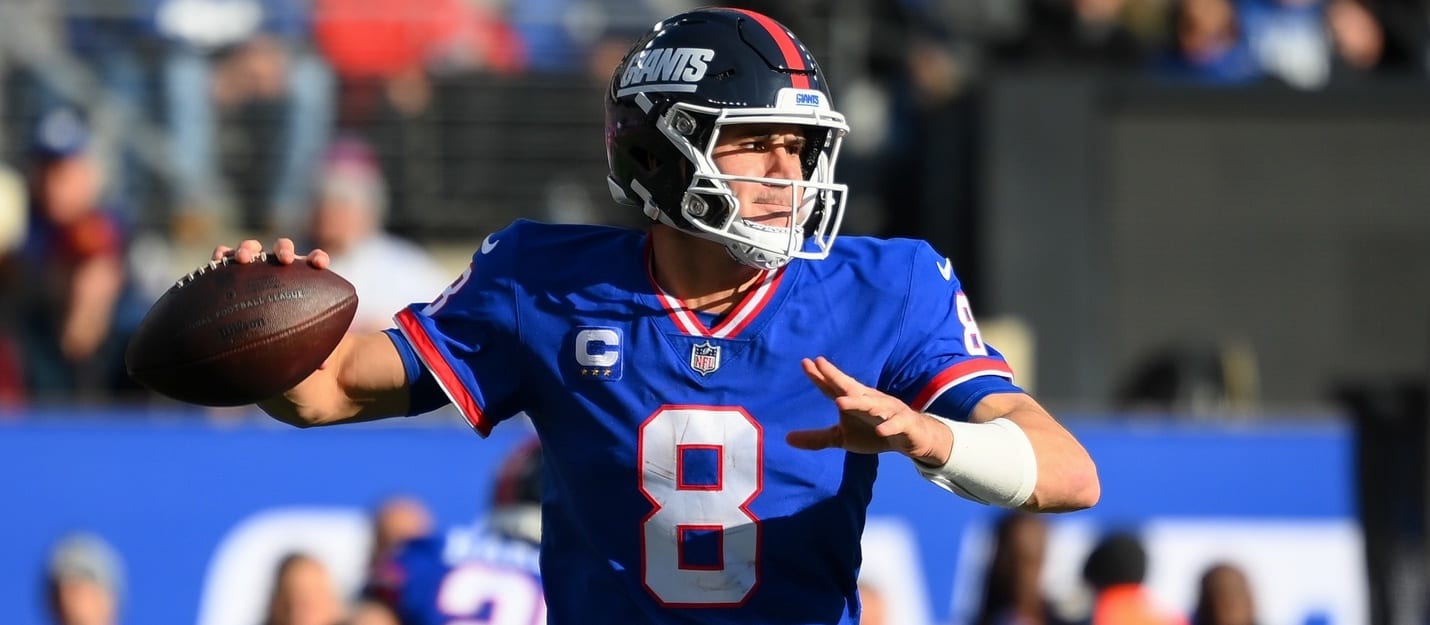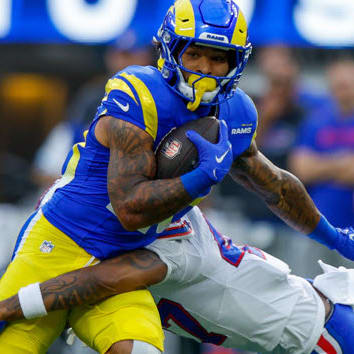Numbers, numbers, numbers. They can make our heads swim with confusion, and not helping the matter, it seems like a "new" statistic comes out every year. Obviously, many fantasy analysts use numbers to create the majority of their cases for or against selecting certain players in fantasy drafts.
Yes, I love numbers. But ultimately, we need to decide which ones matter most. I've been a football analyst since 2007. Over time, I have planted my flag on a few key things when making my fantasy football projections. Of course, players change during their careers. There is often a time while improvement is occurring, and on the back end of a career there is usually a decline. Not every stat means exactly the same thing for every player.
As such, with a bit of discretion, let's check out which numbers I have locked in on at this point for players at the primary offensive positions.
Quarterbacks
Touchdowns and interceptions can be fickle from year to year, so rather than focus on those here is what I look at.
- Passing attempts year over year. Aaron Rodgers threw more than 565 passes per year between 2015 and 2019. However, since 2020, he has thrown as few as 526 and only as many as 542. Rodgers is now with the Jets, but his offensive coordinator is Nathaniel Hackett, who ran the Green Bay offenses in 2020 and 2021. Based on that trend, it's difficult to project Rodgers to do a lot more than he has been. Even mobile quarterbacks like Josh Allen and Patrick Mahomes went well over 600 pass attempts in recent years.
- Rushing yards. We've learned that rushing yards gained by quarterbacks are a fantasy football cheat code. Focus on the signal callers with the highest floor in that department. They will often outproduce the pocket passer who doesn't run much. Daniel Jones is a great example. Over the last three years, Jones threw only 36 touchdown passes. However, he ran for 423, 298 and 708 yards from 2020 through last season -- and also racked up 10 scores on the ground. Jones could easily finish as a top-12 QB if he can run for even 400 more yards.
Running Backs
Common stats like yards per carry and touchdowns often lack context. Running backs are connected to the offense they play in. They are also dealing with varying levels of offensive line play. There are two statistics I use when creating projections for players at this position.
- Broken tackle rate usually indicates how often a back puts himself in position for a positive run. Regardless of who is surrounding that player, broken tackle rate allows me to predict progression when his supporting cast improves. Although Nick Chubb tied a career low with 5.0 yards per carry last year, his broken tackle rate was in the 84th percentile. That indicates he is still an elite player. I expect Cleveland's offense to make a significant jump this season. Despite Chubb's "down" year, I see no decline and a player who you will rather enjoy having on your roster.
- Yards after contact is a stat I like to use in conjunction with broken tackle rate. This statistic can paint different pictures, though. For example, Chubb was in the 96th percentile in yards after contact. Combined with his elite broken tackle rate, that further solidifies my case that Chubb will likely have another dominant season. On the other hand, David Montgomery had the same broken tackle rate as Chubb last year. Sounds promising, right? Well, his yards after contact was just in the 50th percentile. That tells me that he can break a lot of tackles but does little with his opportunities. Despite being in a quality offense in Detroit, Montgomery's numbers tell me his potential yardage likely has a limited ceiling.
Wide Receivers/Tight Ends
There are many useful stats to pull from for pass catchers. However, if I start blending together too many different numbers, we often get a convoluted picture of each player. Naturally, there are different types of pass catchers. Obviously, there is the alpha. This is the player who often sees a high share of a team's passes thrown his way. The alpha will frequently see targets in every area of the field. We also have the possession receiver, who usually catches more short and intermediate routes. There is often less emphasis on this player seeing downfield passes. Finally, we have the field stretcher -- your classic deep threat.
Primary Stats for the Alpha
- Percentage of team targets shows us what level of usage a player has in his offense. Of course, a highly-targeted pass catcher in a high-volume passing attack should be more productive than a highly-targeted player in a low-volume passing team. Davante Adams has frequently seen over 30 percent of his team's targets in recent years. Anything over 25 percent is a substantial target share.
- In addition, average yards after the catch is very useful. When a receiver can create his own yards, he often is less dependent upon other factors that would limit yardage totals for the majority of players. Cooper Kupp was in the 79th percentile in yards after the catch last year before getting injured. Any player around the 70th percentile has the potential for more yards -- and more touchdowns.
Primary Stats for the Possession Receiver
- Catch rate is one of my go-to statistics for possession receivers. The more reliable a player is at the catch point, the more likely a quarterback will continue to trust him. Chris Godwin posted an 87th-percentile catch rate last year. He will likely be paired with Baker Mayfield this season, and in the three years before Mayfield injured his shoulder in 2021, Mayfield's possession wideout, Jarvis Landry, averaged 79 receptions and 997 yards. That bodes well for Godwin's chances of having a big season.
- Like with the alpha, average yards after the catch is just as important when predicting upside for possession receivers.
Primary Stats for the Field Stretcher
- A key pair of statistics to use together for the deep threat are average depth of target and air yards per game. When combining these two numbers we learn what the upside potential for these players can be. An example is Gabe Davis. Last year he was in the 92nd percentile in average depth per target. He also was in the 94th percentile air yards per game. These stats let me know he will continue having opportunities to make big plays on a regular basis.
- The stat that balances the pair listed above is the catch rate. Unsurprisingly, deep passes have a lower probability of being completed. Therefore, the use of percentiles is helpful. With Davis having all those air yards and deep targets, why was he a bit disappointing last year? You guessed it. His catch rate, which was in the 14th percentile.







































